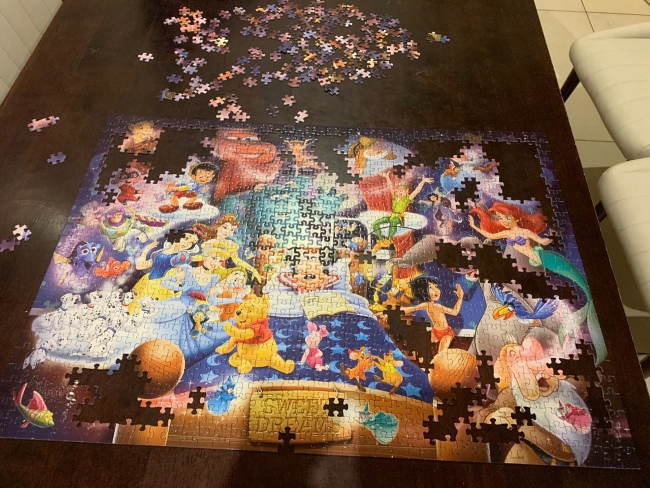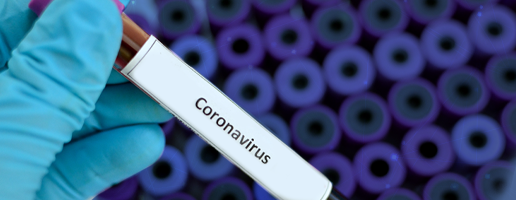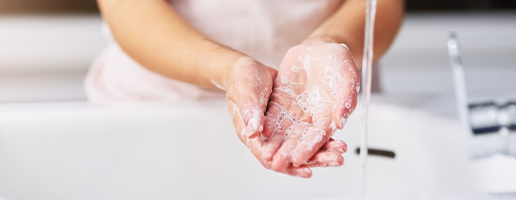Ilana Gerschlowitz: Supporting a child who has autism through COVID-19

Managing the daily lives of typically developing children during the national stay at home is challenging for any parent or caregiver. However, for parents of a child who has autism, the stay-at-home period and all measures aimed at curbing the spread of COVID-19 can be particularly challenging.
Ilana Gerschlowitz is a mother of three sons, two diagnosed with autism, and author of “Saving my sons – A journey with autism”. She is also the director of the Star Academy. Ilana is passionate about helping parents with children who have autism to manage life under ordinary circumstances. Now, she shares invaluable tips around helping a child with autism and keeping them safe and healthy through COVID-19, through stay-at-home (lockdown) periods and more. Ilana has also shared her advice in a podcast.
Ilana says, “I want to bring a message of hope to those parents who may at the moment be worrying about the future of their autistic child and struggling to get through the day.”
Ilana’s 17-year-old son David is severely autistic. “So, I know that those parents who are home with a child who has autism are facing the very real challenge of trying to explain to their anxious child why he or she can’t live their normal daily routine – a routine that is key to a child with autism feeling safe and able to cope. This routine might include going to school, seeing members of the extended family, seeing therapists or doctors, going to the shops, or for a walk or more. All of that is currently not possible and a child with autism may not understand why.”
Setting up a daily schedule is your first step
Ilana suggests that bringing structure to the day is a key way to deal with the stay-at-home period or any time in which a child with autism needs to be confined to their home.
“Children with autism are generally visual learners and so it’s a very good idea is to create a visual schedule that will help you to keep the day as structured and prepare them in advance as to their routine, so they know what is coming next at all times. This will go a long way in reducing their anxiety. Mark the days off on the calendar to show them how long they will be at home, which day we are currently on, and so on.” Ilana also suggests involving your child in household chores like cooking, baking, making the beds and doing the washing.
David and Ilana’s daily schedule looks like this:
- Get up and get dressed
- Brush our teeth
- Exercise in the garden
- Make and eat our breakfast
- Meal preparation for cooking and baking later in the day. David to make biscuits, pizza, hamburgers, hotdogs and bread from scratch
- Table top work. “I have chosen a 1 000-piece puzzle that we work on together every day,” says Ilana. “I set a timer so he knows how long the activity will last for.”
- Next, David has an online session with his schooling instructor. This lasts for an hour. “He keeps my son engaged and stimulated through an interactive online learning session,” says Ilana.
Lunchtime follows with the family
- Ilana makes sure to involve David in washing the dishes and packing clean dishes away
- He then gets time on the swing outside while he listens to music with ear phones
- Next on the list is a time to kick the ball around the garden
- After that there is time for art-based activities including mosaic-making, handling playdough, painting or colouring in
- Another interactive online learning session follows, also scheduled for an hour with David’s online instructor. This time they focus on exercises that require David to join the dots, online copy typing and answering questions around topics he enjoys or places he loves to visit.
- Then it is bath time, supper time, time for a little TV-watching and bedtime.
Understanding autism
“When my first son David was diagnosed with autism I experienced the most unimaginable grief. I cried oceans of tears and it felt like my world had come to an end. Once I began to empower myself with the knowledge and information to help my son, I started to realise that things weren’t as bad as I thought. I discovered Applied Behaviour Analysis (ABA), which is evidence-based treatment for children with autism,” says Ilana.
2 April 2020 marks World Autism Awareness Day. According to the US Centers for Disease Control and Prevention, 1 in 54 children are affected by autism, with the condition four times more common in boys than in girls. “We don’t celebrate the day,” says Ilana. “Rather, we commemorate the day and month that follows in honour of those children and adults who live with autism.”
Autism is a spectrum disorder, which means people who have the condition can present with a wide range of symptoms. “On the one end of the spectrum, we have the child whose autism means they can’t speak at all and on the other end of the spectrum, we have a child who can speak but who struggles to fit into social settings,” says Ilana.
Diagnosing autism in a children
Autism can affect language, social skills and repetitive behaviour. If a child exhibits criteria in two out of these three areas, they are considered to be on the autism spectrum. Some red flags to look out for in a young developing child include:
- Lack of eye contact
- Not responding appropriately to greetings or when their name is called
- Not engaging in pretend play
- Preferring to play alone
- Not babbling by 12 months
- No imitative behaviour such as waving ‘bye-bye’ by 12 months
- Not speaking any words by 16 months
- Any loss of speech at any age
- Losing previously acquired skills at any age
- Playing with toys in unusual ways, such as spinning them or lining them up
- Being a picky eater
Other red flags include:
- Appearing to be in their own world
- Not following any or following too few receptive instructions
- Repetitive movements with object or posturing of body arms hand or fingers
- Being hyperactive
- Being unable to sustain their attention compared to their peers
- Having unusually strong attachments to particular objects
- Limiting conversations to very specific topics
- Exhibiting oversensitivity to sounds or textures
- Displaying challenging behaviours such as aggressions, tantrums and self-injury.
“If a parent is worried about their child’s development, they should get it checked out as soon as possible as early intervention and diagnosis sets the stage for recovery. The M-CHAT, a modified checklist for autism in toddlers, is a free, validated screening tool which lists 20 questions that assesses a child’s risk of autism. If you have concerns about your child’s development, you can download the M-CHAT and take it to your paediatrician and ask him to go over the criteria listed in the checklist,” says Ilana.
Many children with autism also suffer from the following health challenges:
- Food allergies
- Nutrient deficiencies
- Immune dysregulation
- Inflammation
- Impaired detoxification
- Viral/ fungal and bacterial infections.
“My advice to parents is to never, ever give up hope.”
“I wrote my book Saving my sons. A journey with autism because I had a story to tell and I wanted to provide a road map and a way forward for other parents battling the autism diagnosis. I wanted to dispel the old archaic notion that autism has to be a lifelong disability and I wanted to educate professionals, doctors, psychologists, teachers, speech and occupational therapists on the latest treatments and developments around autism,” says Ilana.
“My advice to parents is to never, ever give up hope. My wish for all parents is that you find the right switches to turn the lights back on – autism is treatable and recovery possible. Even though early intervention is key, it is never too late to start the right treatments. Please remember that autism is a treatable medical illness and does not have to be a lifelong disability.”

The 1 000-piece puzzle that Ilana and her son David made during the COVID 19 stay-at-home period.
All medical information found on this website including content, graphics and images, is for educational and informational objectives only. Discovery Health publishes this content to help to protect and empower all South Africans by promoting a better understanding of COVID-19.
Find a healthcare professional near you
Find a doctor or hospital near you online or by using the Discovery app.
Related articles

Outbreak of the 2019 novel coronavirus
The 2019 novel coronavirus (2019-nCoV) has caused an outbreak of fatal respiratory illness first detected in Wuhan, China. This is a completely new strain with no vaccines available. The best way to prevent infection is to avoid being exposed to this virus.

Understand the Novel Coronavirus (COVID-19) and prevent infection
No country is immune to the spread of the Novel Coronavirus - officially named COVID-19 by the World Health Organization (WHO). The outbreak has reached pandemic proportions and been declared a global public health emergency.

Novel Coronavirus - wash your hands of the threat
As toddlers, we learnt to wash our hands. But, did we ever master the skill to the extent that is needed to wash pathogens off our hands, and save lives? Multiple studies show people don't wash their hands at the right times, in the right way or for the right amount of time. We contaminate the things and people we touch with the germs we carry on our hands.